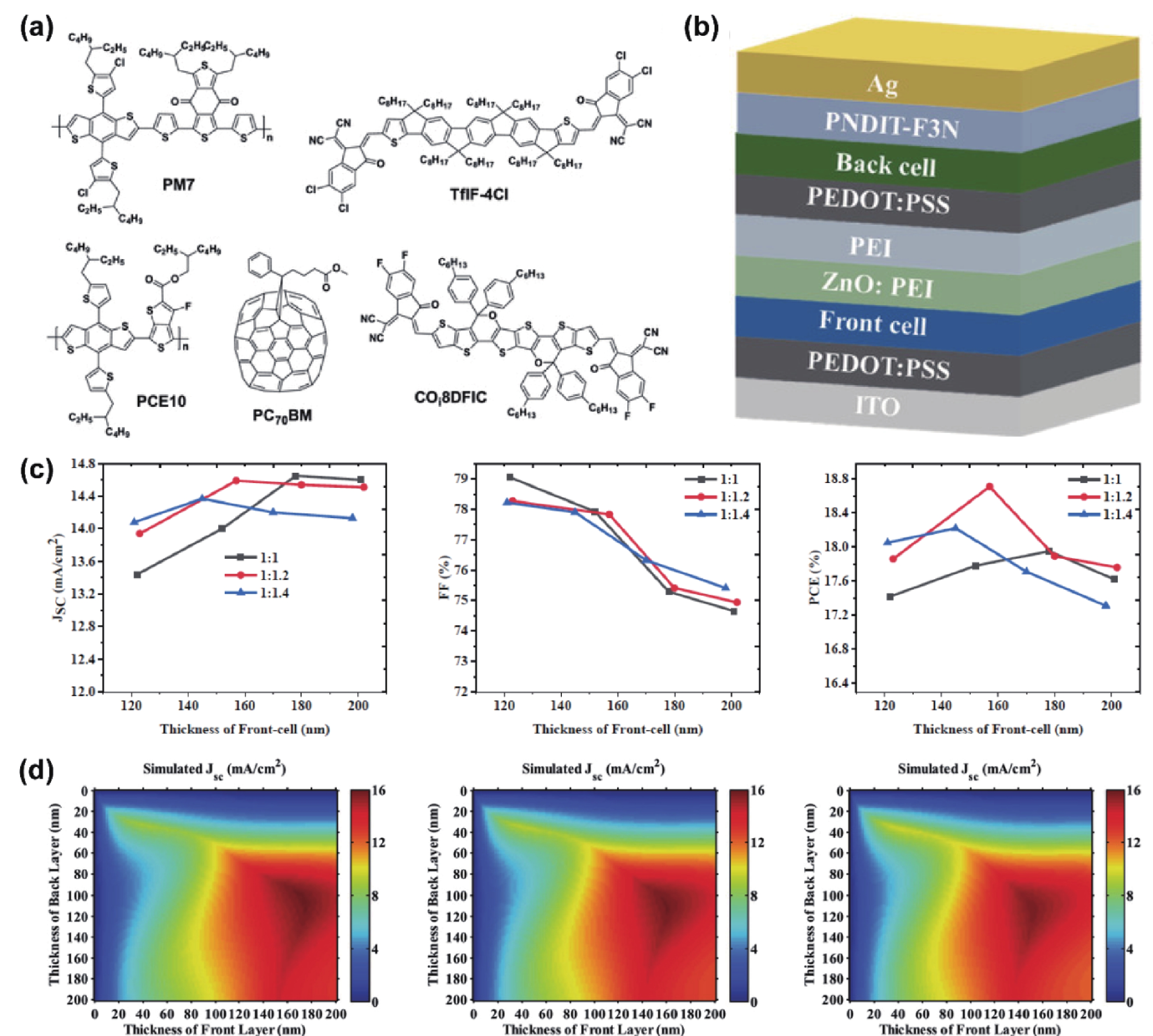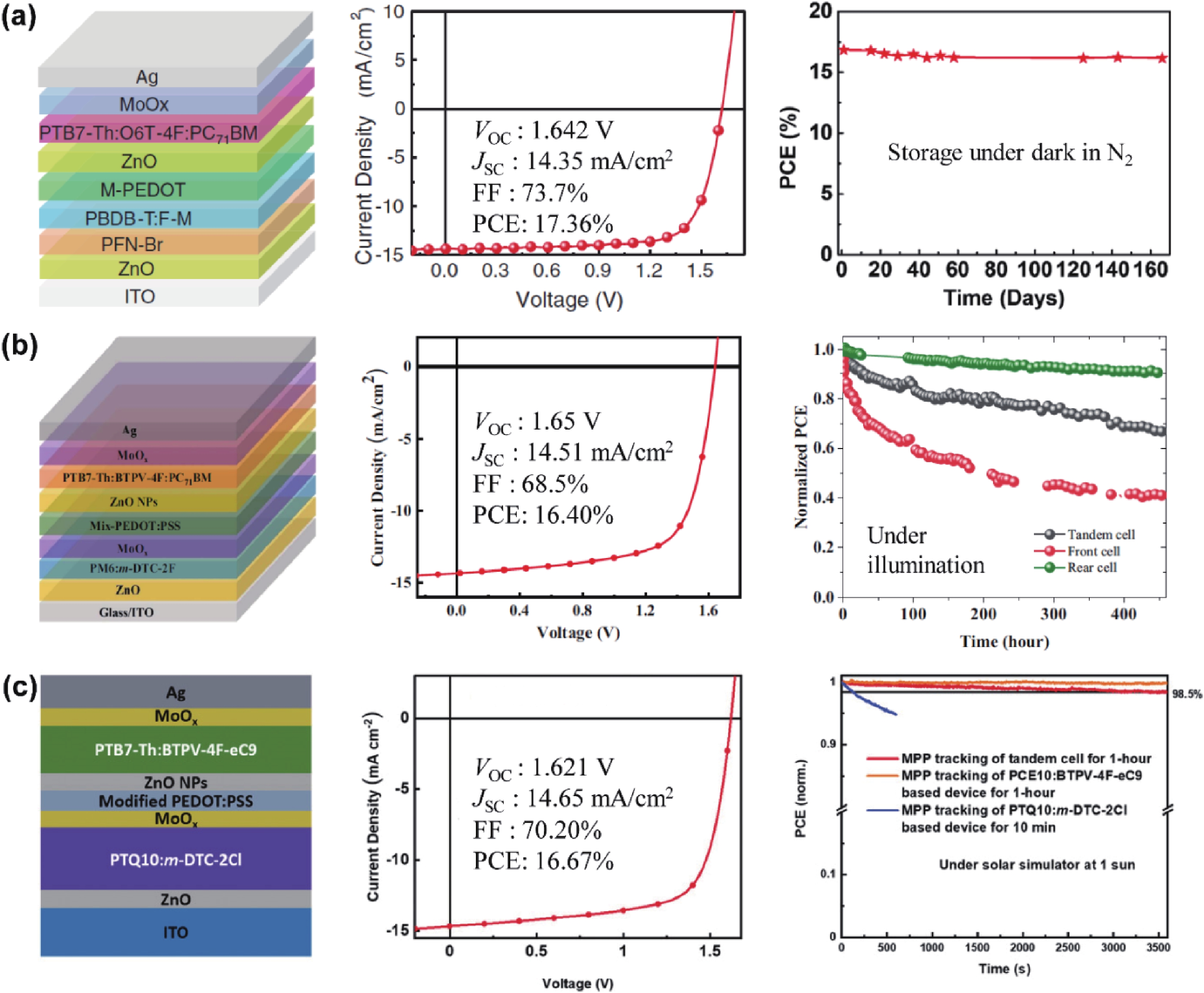| Citation: |
Xiaoyan Du, Ning Li, Liming Ding. Solution-processed tandem organic solar cells[J]. Journal of Semiconductors, 2021, 42(11): 110201. doi: 10.1088/1674-4926/42/11/110201
****
X Y Du, N Li, L M Ding, Solution-processed tandem organic solar cells[J]. J. Semicond., 2021, 42(11): 110201. doi: 10.1088/1674-4926/42/11/110201.
|
-
References
[1] Liu Q, Jiang Y, Jin K, et al. 18% efficiency organic solar cells. Sci Bull, 2020, 65, 272 doi: 10.1016/j.scib.2020.01.001[2] Li C, Zhou J, Song J, et al. Non-fullerene acceptors with branched side chains and improved molecular packing to exceed 18% efficiency in organic solar cells. Nat Energy, 2021, 6, 605 doi: 10.1038/s41560-021-00820-x[3] Kirchartz T, Taretto K, Rau U. Efficiency limits of organic bulk heterojunction solar cells. J Phys Chem C, 2009, 113, 17958 doi: 10.1021/jp906292h[4] Chen C, Chang W, Yoshimura K, et al. An efficient triple-junction polymer solar cell having a power conversion efficiency exceeding 11%. Adv Mater, 2014, 26, 5670 doi: 10.1002/adma.201402072[5] Li M, Gao K, Wan X, et al. Solution-processed organic tandem solar cells with power conversion efficiencies > 12%. Nat Photonics, 2017, 11, 85 doi: 10.1038/nphoton.2016.240[6] Qin Y, Chen Y, Cui Y, et al. Achieving 12.8% efficiency by simultaneously improving open-circuit voltage and short-circuit current density in tandem organic solar cells. Adv Mater, 2017, 29, 1606340 doi: 10.1002/adma.201606340[7] Cui Y, Yao H, Gao B, et al. Fine-tuned photoactive and interconnection layers for achieving over 13% efficiency in a fullerene-free tandem organic solar cell. J Am Chem Soc, 2017, 139, 7302 doi: 10.1021/jacs.7b01493[8] Xiao Z, Jia X, Li D, et al. 26 mA cm–2 Jsc from organic solar cells with a low-bandgap nonfullerene acceptor. Sci Bull, 2017, 62, 1494 doi: 10.1016/j.scib.2017.10.017[9] Meng L, Zhang Y, Wan X, et al. Organic and solution-processed tandem solar cells with 17.3% efficiency. Science, 2018, 361, 1094 doi: 10.1126/science.aat2612[10] Ho C, Kim T, Xiong Y, et al. High-performance tandem organic solar cells using HSolar as the interconnecting layer. Adv Energy Mater, 2020, 10, 2000823 doi: 10.1002/aenm.202000823[11] Qin S, Jia Z, Meng L, et al. Non-halogenated-solvent processed and additive-free tandem organic solar cell with efficiency reaching 16.67%. Adv Funct Mater, 2021, 31, 2102361 doi: 10.1002/adfm.202102361[12] Jia Z, Qin S, Meng L, et al. High performance tandem organic solar cells via a strongly infrared-absorbing narrow bandgap acceptor. Nat Commun, 2021, 12, 178 doi: 10.1038/s41467-020-20431-6[13] Firdaus Y, Ho C, Lin Y, et al. Efficient double- and triple-junction nonfullerene organic photovoltaics and design guidelines for optimal cell performance. ACS Energy Lett, 2020, 5, 3692 doi: 10.1021/acsenergylett.0c02077[14] Liu G, Xia R, Huang Q, et al. Tandem organic solar cells with 18.7% efficiency enabled by suppressing the charge recombination in front sub-cell. Adv Funct Mater, 2021, 31, 2103283 doi: 10.1002/adfm.202103283 -
Proportional views






 DownLoad:
DownLoad:















